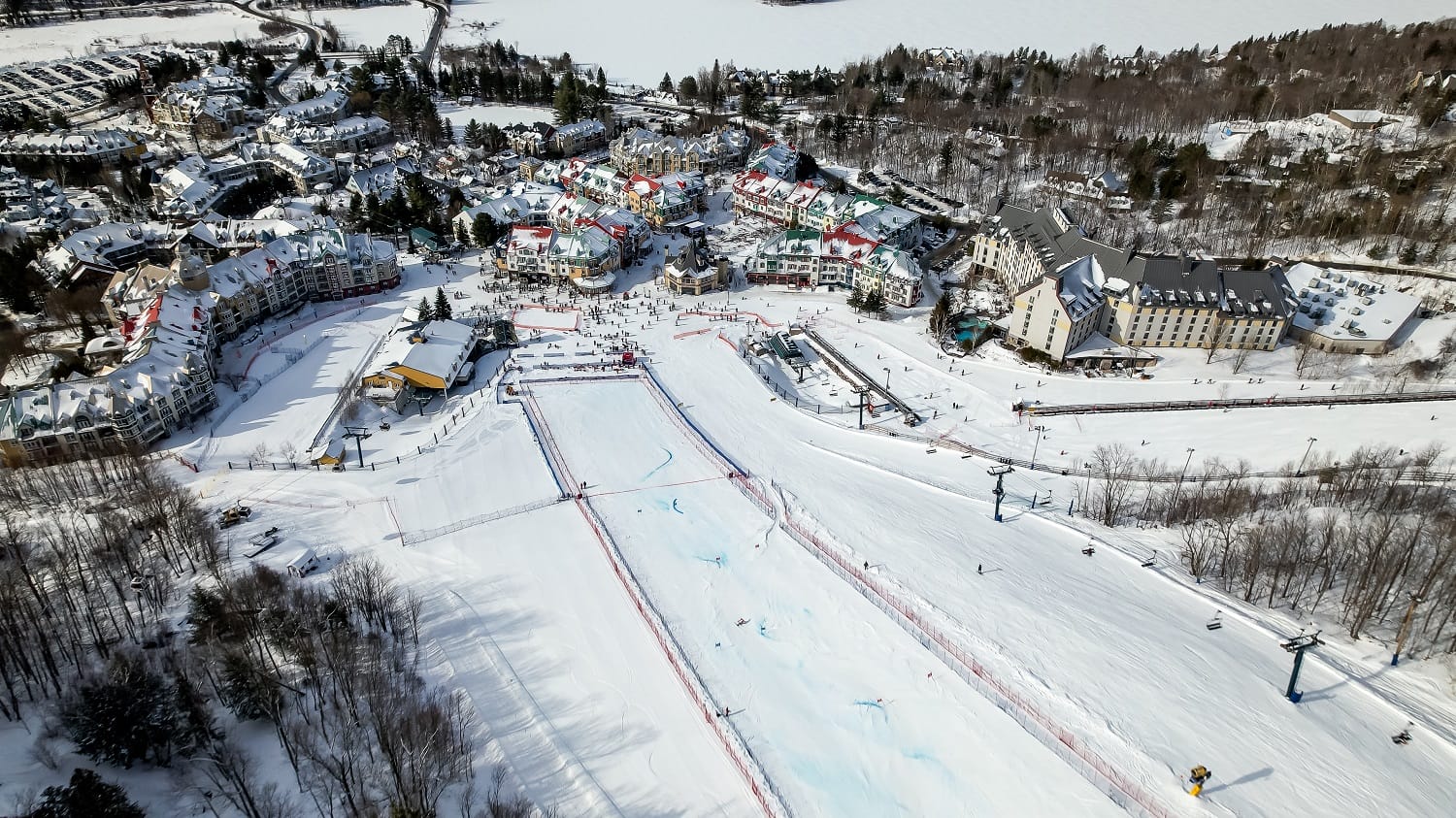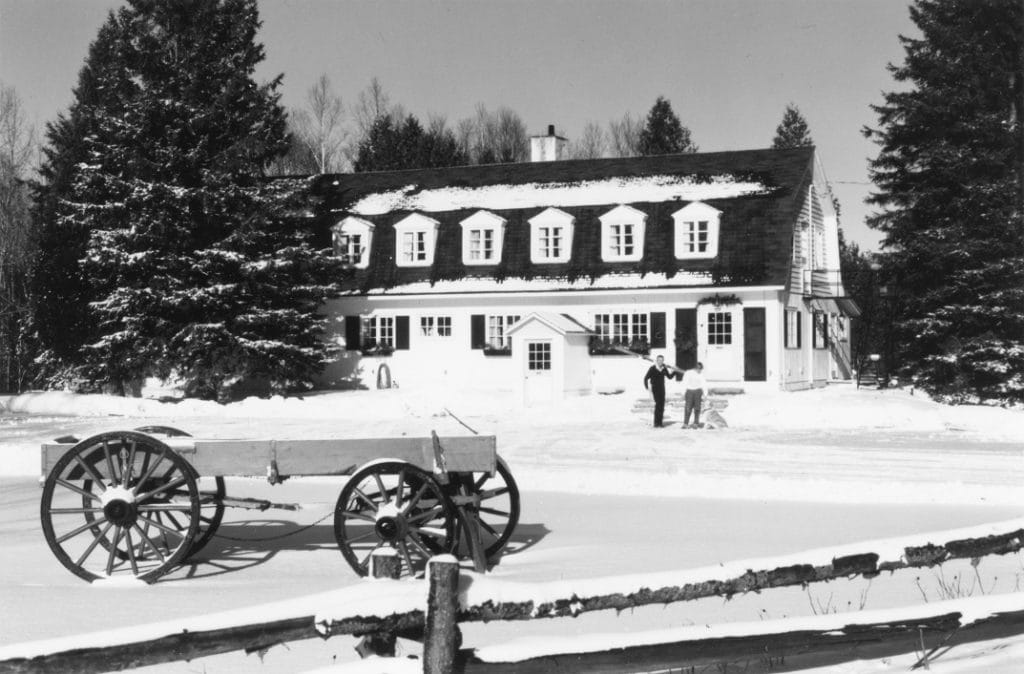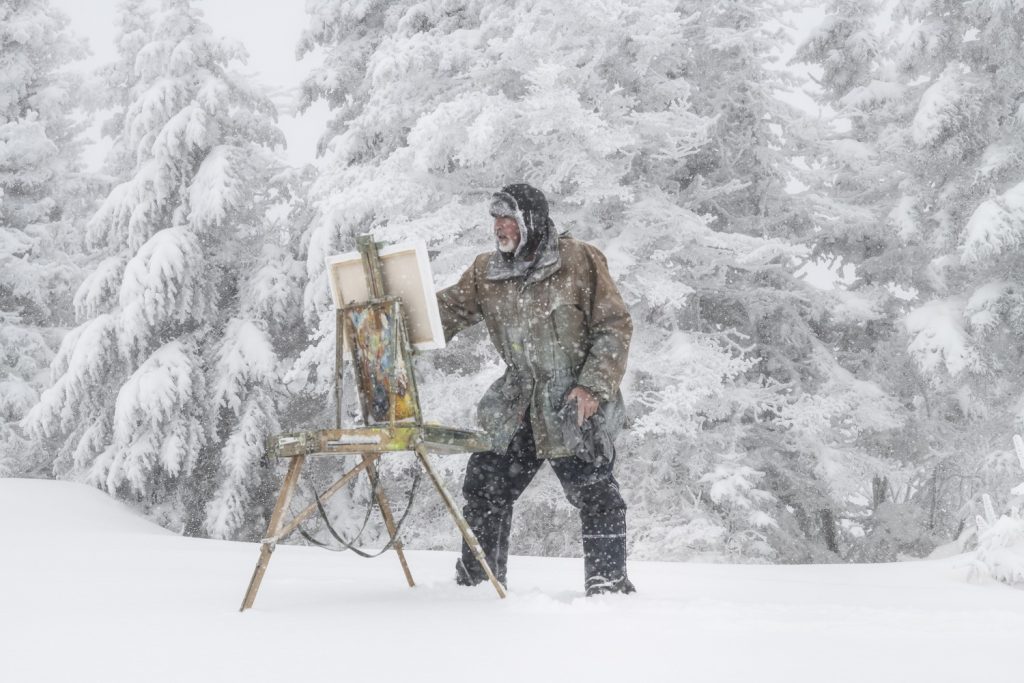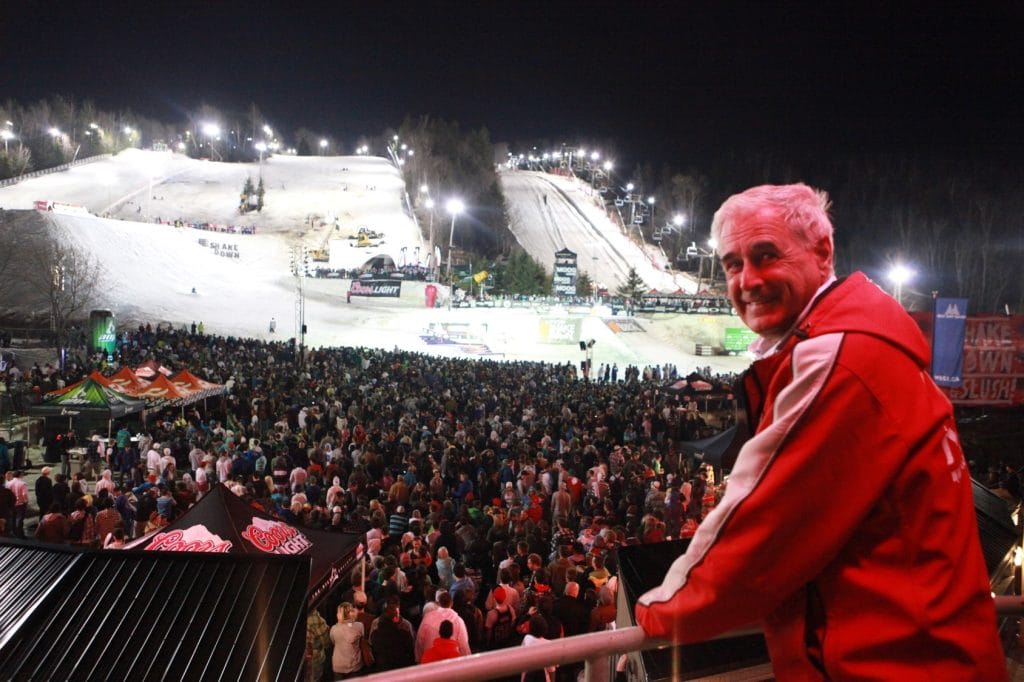Mont-Tremblant and the World Cup
Racing, whether on foot, in a car or on skis, excites us and gives us a sense that anything is possible and maybe we could win. Admit that when you ski with your friends, you always feel a bit of satisfaction when you are the first to the bottom. It’s probably why we also like to watch racers – the real ones, the professionals – in any kind of race.
When Joe Ryan started his ski centre project, what he valued most was the prestige of being the owner. But when he came to know more about the world of skiers, he understood more about competition. Being a huge fan of horse racing himself, and the happy owner of a stallion, he called the run the “Flying Mile” in honour of his horse. As soon as the resort was open, he authorized the Redbirds club to keep organizing races on the slopes, as he had already been doing for several years.
It took 44 years of its existence for Tremblant resort, in 1983, to host its first World Cup of alpine skiing. That year we saw the Women’s World Cup in giant slalom on the Flying Mile run.
To obtain the rights to organize a World Cup race, the run has to meet a number of FIS standards and satisfy the Regulations of International Ski (RIS) competitions. For example, the minimum change in altitude must be 300 metres. For the women’s giant slalom at Mont Tremblant, the start is at 590 metres of altitude above sea level and the finish at 270 metres. In other words, the run provides 320 metres of altitude change over a distance of 1190 metres, which corresponds to the standards.
The course setter for every giant slalom race is chosen by an FIS committee from among the coaches of the participating national teams. Every course setter has their own style and rhythm. It’s a bit like an orchestra conductor; the racers have to adapt to the course setter as musicians do to their maestro. When the racers study the course, they have to understand its rhythm and have a vision of what this course’s architect wanted to impose.

Of course, the national team whose coach was selected to set the course has an advantage because the skiers will have fewer surprises. On the other hand, the mountain can surprise the racers. The first section of the Flying Mile is steep and often icy; a small error can reduce the racer’s speed. It’s possible, however, to recover in a few hundredths of a second. But it’s on the Flying Mile flat that the race can change. A minimal error can reduce the speed without any way to get it back…and cause that racer to lose the race.
The giant slalom racer who will win must be an excellent slider and, for those who watch her run, must give us the impression that she’s floating on the snow. Obviously, a wind of only a few kilometres an hour can influence the results, particularly if it’s a headwind, as can an icy or damaged surface. The strategy is always to accumulate speed on the steeps and slide across the flats.
Here’s an example. The winner of the first running of a World Cup race at Tremblant in 1983 was Laurie Graham. Laurie was born in 1960 in Inglewood, Ontario. She started skiing on the Osler Bluff runs, in Collingwood. Laurie was a talented skier and technically very solid but had not yet had a victory on the World Cup circuit when she leaped out of the starting gate.
At the time, among the Canadian women, the most visible was Gerry Sorensen. The start for the descent was at the top of McCulloch and the finish at the foot of the Flying Mile. Gerry Sorensen had bib number one, which is usually very good news for a skier, but because the surface was icy and mirror-like, it was very hard to manoeuvre and keep to the fall line. When she got to the flat, she didn’t have enough speed to allow her to slide quickly over the flat part of the course. When it was Laurie’s turn, with bib number 15, the fourteen previous racers had cracked and roughed up the ice a bit. Laurie was able to use her excellent technique to make her skis bite into the surface and keep to the fall line while she generated good speed on the steep part of the course. Known as an excellent slider, she used the accumulated speed and won the race. Laurie tells me that this taste of victory that she had at Tremblant taught her how to be a winner, and allowed her to win many races. She actually holds six World Cup wins. Her impressive career also includes participation in three Olympics, including 1980 in Lake Placid, 1984 in Sarajevo, and 1988 in Calgary.
Laurie will be back at Tremblant on December 2 and 3. Forty years after her victory, she will see the second and third winners of the World Cup at Tremblant mount the podium.
She will certainly watch the event with a touch of nostalgia. As for me, who was there for her victory in 1983 and who will see a new generation of women skiers show their stuff on my beloved Mont Tremblant, I will simply be glad to be present.
More from this author by clicking on his photo below.


Peter Duncan123 Posts
Membre de l’équipe canadienne de ski alpin de 1960 à 1971, skieur professionnel de 1971 à 1979 et champion américain en 1965, Peter Duncan a participé aux Jeux olympiques de 1964 à Innsbruck ainsi qu’à ceux de 1968 à Grenoble. Intronisé au Temple de la renommée du ski au Canada, au Panthéon des sports du Québec et récipiendaire de la médaille du gouverneur général, Peter a longtemps été commentateur de ski à la télévision./ Peter Duncan is a Canadian former alpine skier who competed in the 1964 and the 1968 Winter Olympics. He was named to the Canadian National Alpine Team in 1960 at the age of 16 and competed at the national level for the next 10-years until 1970 before retiring.











0 Comments